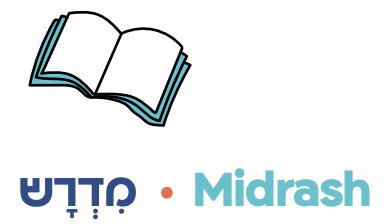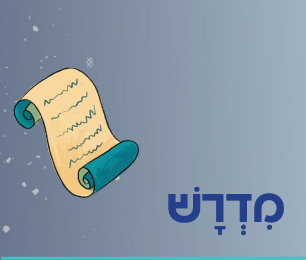Ilustration Credit: Elad Lifshitz, Dov Abramson Studio

Midrash מִדְרָשׁ
A core part of the Yom Kippur עֲבוֹדָה (avodah, service) involves two goats. One is offered as a sacrifice, and one is sent to the wilderness. What do these goats represent?
The Zohar connects these two goats to another pair of two goats in the Torah: the two goats that Rivkah prepared when she was helping Yaakov get a בְּרָכָה (berakhah, blessing) from Yitzhak (see Parashat Toldot).
רִבִּי יְהוּדָה אָמַר, רָמַז הָכָא דְּזַמִּינִין בְּנוֹי דְיַעֲקֹב לְקָרְבָא שְׁנֵי שְׂעִירִים, חַד לַיהוה, וְחַד לַעֲזָאזֵל בְּיוֹמָא דְכִפּוּרֵי. וּבְגִין כָּךְ, קָרִיבַת "שְׁנֵי גְדָיֵי עִזִּים" (בראשית כז:ט) חַד בְּגִין דַּרְגָּא דִלְעֵילָא, וְחַד בְּגִין לְכַפְיָיא דַרְגֵּיהּ דְּעֵשָׂו דְּלָא יִשְׁלוֹט עֲלֵיהּ דְּיַעֲקֹב, וְעַל דָּא שְׁנִי גְדָיֵי עִזִּים, וּמִתַּרְוַיְיהוּ טָעִים יִצְחָק וְאָכִיל.
R. Yehudah said: [the two goats that Rivka prepared] remind us of the descendants of Yaakov, who in the future would offer two goats on Yom Kippur, one for God and one to Azazel. For this reason, Rivkah offered "two goats" (Bereishit 27:9), one representing the higher spiritual levels of Yaakov and one to overpower Esav, and from both goats Yitzhak tasted and ate.
- Our Rabbis often consider Yaakov and Esav to symbolize two age-old opposing forces: good vs. evil, or coming close to God vs. going away from God. How do the two goats of Yom Kippur capture this idea? (Hint: Look at how they're described throughout Vayikra perek 16.)
- If Yaakov is represented by the goat that is is ‘לַה (la-Hashem, for God), what does that tell you about what it means to be part of Yaakov?
- How does Yom Kippur connect to the time Yitzhak blessed Yaakov? How is that story supposed to shape our experience of Yom Kippur?
-------------------





